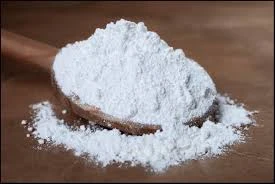
Exploring the Uses and Benefits of Phosphoric Acid in Various Industries
Understanding Phosphoric Acid Properties, Uses, and Safety
Phosphoric acid, a colorless, odorless, and syrupy liquid, is one of the most widely used inorganic acids in various industries. Chemically known as H₃PO₄, this acid plays a crucial role in a multitude of applications ranging from agriculture to food processing, making it an essential compound in both industrial and everyday contexts.
Chemical Properties
Phosphoric acid is a triprotic acid, meaning it can donate three protons (hydrogen ions) in aqueous solution. This property makes it possible to create various phosphate salts and esters through neutralization reactions. The acid has a relatively low pH, typically around 1-2 in concentrated solutions, which makes it a strong acid in its concentrated form, although it is classified as a weak acid due to its incomplete ionization in dilute solutions.
When dissolved in water, phosphoric acid dissociates into dihydrogen phosphate (H₂PO₄⁻), hydrogen phosphate (HPO₄²⁻), and phosphate ions (PO₄³⁻). This dissociation is pH-dependent; as the pH increases, the dissociation reaches various stages, forming a versatile buffer system that is crucial in biological systems and industrial applications.
Industrial Applications
One of the primary uses of phosphoric acid is in the agriculture industry, where it's employed in fertilizer production. Phosphate fertilizers derived from phosphoric acid enrich the soil, promoting healthy plant growth and improving crop yields. This has made phosphoric acid indispensable for global food production, particularly in regions with nutrient-deficient soils.
phosphoric acid

In addition to agriculture, phosphoric acid is significantly used in the food and beverage industry
. It serves as an acidity regulator and flavor enhancer, especially in soft drinks, where it contributes to the tart flavor and acts as a preservative. Its antimicrobial properties help in food preservation, making it a valuable additive in many processed foods.Phosphoric acid is also utilized in various manufacturing processes. In the electronics industry, it’s instrumental in metal etching and cleaning, particularly for aluminum and stainless steel. The acid helps remove oxide layers from metals, improving the surface finish and promoting better adhesion of coatings.
Health and Safety Considerations
While phosphoric acid has numerous beneficial applications, it is essential to handle it with care. It can cause irritation to the skin, eyes, and respiratory tract if proper safety precautions are not followed. Ingestion of concentrated phosphoric acid can lead to severe injury to the mucous membranes and gastrointestinal tract.
When working with phosphoric acid, it is crucial to wear appropriate personal protective equipment (PPE), including gloves, goggles, and protective clothing. Additionally, it should be used in well-ventilated areas to minimize the risk of inhalation. In case of exposure, immediate rinsing with water and seeking medical attention is advised to prevent further injury.
Conclusion
In conclusion, phosphoric acid is a vital compound with diverse applications in agriculture, food processing, and manufacturing. Its unique chemical properties allow it to play a critical role in many industrial processes. However, the necessity for safety precautions cannot be overstated, as improper handling can lead to significant health risks. Understanding both its utility and hazards is key for industries that rely on this versatile acid, ensuring that its benefits can be harnessed while minimizing risks to human health and the environment. As we continue to explore new applications for phosphoric acid, ongoing research and safety education will be essential in leveraging its full potential responsibly.
-
Sodium Dichloroisocyanurate Safety Handling ProtocolsNewsJul.29,2025
-
Mining Chemicals for Copper Extraction Processes GuideNewsJul.29,2025
-
Fertilizer for Sale Shipping and Storage TipsNewsJul.29,2025
-
Dimethyl Disulfide as Sulfurizing AgentNewsJul.29,2025
-
Benzotriazole Safety Data Handling and Storage GuidelinesNewsJul.29,2025
-
Ammonium Bicarbonate Safety Handling Storage GuidelinesNewsJul.29,2025
-
The Transformative Role Of Trichloroisocyanuric Acid in Water TreatmentNewsJul.23,2025
Hebei Tenger Chemical Technology Co., Ltd. focuses on the chemical industry and is committed to the export service of chemical raw materials.
-

view more DiethanolisopropanolamineIn the ever-growing field of chemical solutions, diethanolisopropanolamine (DEIPA) stands out as a versatile and important compound. Due to its unique chemical structure and properties, DEIPA is of interest to various industries including construction, personal care, and agriculture. -

view more TriisopropanolamineTriisopropanolamine (TIPA) alkanol amine substance, is a kind of alcohol amine compound with amino and alcohol hydroxyl, and because of its molecules contains both amino and hydroxyl. -

view more Tetramethyl Thiuram DisulfideTetramethyl thiuram disulfide, also known as TMTD, is a white to light-yellow powder with a distinct sulfur-like odor. It is soluble in organic solvents such as benzene, acetone, and ethyl acetate, making it highly versatile for use in different formulations. TMTD is known for its excellent vulcanization acceleration properties, which makes it a key ingredient in the production of rubber products. Additionally, it acts as an effective fungicide and bactericide, making it valuable in agricultural applications. Its high purity and stability ensure consistent performance, making it a preferred choice for manufacturers across various industries.











